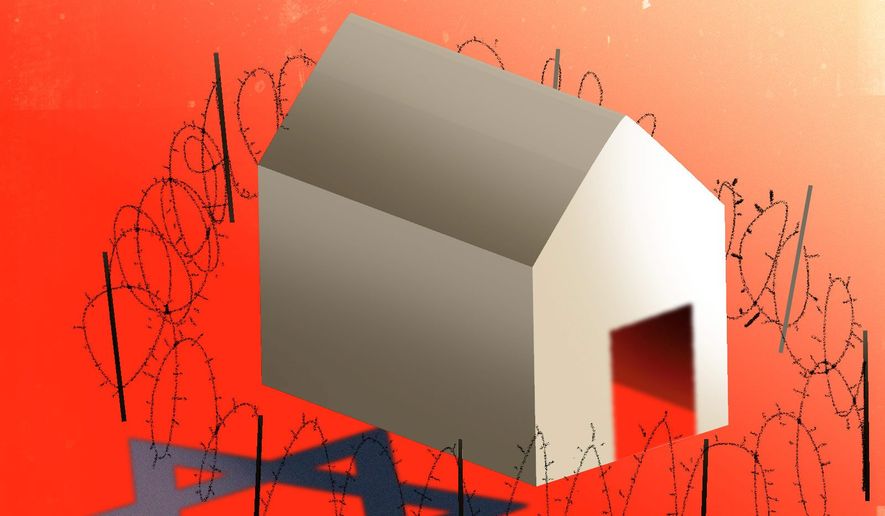OPINION:
Nov. 30 is the day Israel designates for commemorating the 850,000 Jews who fled from Arab countries and Iran following World War II. This year, like every year, the governments now ruling those lands did not mark the occasion. For what it’s worth, I’m going to do so here.
About 80% of Israelis are Jews. A significant minority of Israelis, close to 20%, are Arabs (or Palestinians — they may identify as they like). Most Israeli Jews are not from families that migrated from the Middle East to Europe centuries ago. Most are Mizrahim, Jews who have lived for thousands of years among Arabs, Persians and other Middle Eastern and North African peoples.
The late Charles Krauthammer observed that Israel “is the only nation on earth that inhabits the same land, bears the same name, speaks the same language, and worships the same God that it did 3,000 years ago.”
But imperialist invasions and occupations against which the Jews fought led to the dispersal of Jews to lands across the region where they were ruled by a long list of conquerors until, in the 20th century, most became subjects of the nation-states created following the collapse of the Ottoman Empire.
The Mizrahim suffered persecution but, at some times and in some places, there was toleration, which allowed them to prosper, and make contributions to the societies in which they lived — in commerce, academia, the arts and even as government advisers. From Morocco to what became Pakistan, Jewish communities survived.
Then in 1940, Nazi Germany defeated France. The French colonial possessions of Morocco, Algeria and Tunisia came under the rule of Vichy, a collaborationist government that introduced “race laws” discriminating against Jews, excluding Jews from certain professions and confiscating Jewish property.
In 1941, a Fascist regime took power in Iraq. A few months later, there was the Farhud, the “violent dispossession” of the Jews of Baghdad, who then constituted as much as a third of the city’s population.
The most prominent Arab/Muslim leader in Palestine, which passed from Ottoman to British rule following World War I, was Haj Amin el-Husseini, the mufti of Jerusalem. In 1929 and 1936, he ignited bloody riots against Palestinian Jews. In 1941, he moved to Berlin, where he met with Hitler, and assisted the German war effort by broadcasting pro-Nazi and anti-Jewish messages into the Middle East.
In countries where German forces directly exercised power, such as Tunisia beginning in 1942, Jews were compelled to wear yellow stars, subjected to forced labor and incarcerated in concentration camps.
The Allied victory in 1945 saved the lives of many Mizrahim. But the intensification of hostility toward Jews brought about by the Nazis did not dissipate.
In 1947, the United Nations issued a resolution calling for the partition of Palestine into two states: “one Arab, one Jewish.” The Jewish community in Palestine accepted the resolution. The Arab community in Palestine rejected it.
On May 14, 1948, the flag of the British Empire was lowered in Palestine, and the State of Israel was proclaimed. On May 15, the armies of Egypt, Jordan, Syria, Lebanon and Iraq invaded.
The Jordanian army conquered Judea and Samaria which it soon renamed “the West Bank.” All Jews, including those in the Jewish Quarter of the Old City of Jerusalem, were expelled.
But the Arab rulers failed to annihilate Israel. They then turned their anger on their own Jewish citizens, encouraging pogroms against them, stripping them of their property and citizenship, forcing them to flee. Most found their way to Israel where, truthfully, many encountered bias and discrimination. Increasingly, however, the country has become a melting pot.
I should note that Iran, a predominately Persian country, followed a different path. Initially, Israel and Iran had cordial relations. Then in 1979, there was an Islamic Revolution.
While reporting on that upheaval, I paid a visit to the country’s chief rabbi. A portrait of Ayatollah Ruhollah Khomeini hung above his desk. He told me that after thousands of years of coexistence, Iranian Jews had nothing to fear from their fellow Iranians. He was mistaken. Over the past 41 years, Iranian Jews have suffered harsh oppression, and most have emigrated.
Iran’s rulers today threaten Israelis with genocide while developing nuclear weapons that would make that a serious possibility.
Palestinian leaders in Gaza praise the theocratic regime. Palestinian leaders in the West Bank are less openly bellicose but unwilling to agree to a “two-state solution” defined as two states for two peoples, their conflict put to rest. They continue to demand that all Palestinian refugees of the 1948 war, along with their millions of descendants, be granted a “right to return” to Israel where they would constitute a majority of the population.
How much does the average Palestinian know about the Jewish refugees from Arab countries? My guess: very little.
Egypt and Jordan have been at peace with Israel for more than a generation, but it’s been a cold peace. It would be useful if Egyptian and Jordanian leaders had the courage — even if only one day a year — to acknowledge that their Jewish communities were mistreated and, ultimately, ethnically cleansed. I’d recommend they publish, in Arabic, “Uprooted: How 3,000 Years of Jewish Civilization in the Arab World Vanished Overnight,” by Lyn Julius, the daughter of Iraqi Jewish refugees.
The point of the exercise would not be for Egyptians, Jordanians and others to feel guilty. The point would be for them to become familiar with their history, and with the history of their cousins, an indigenous people of the Middle East whose self-determination in part of their ancestral homeland was — and remains — both just and necessary.
• Clifford D. May is founder and president of the Foundation for Defense of Democracies (FDD) and a columnist for The Washington Times.




Please read our comment policy before commenting.